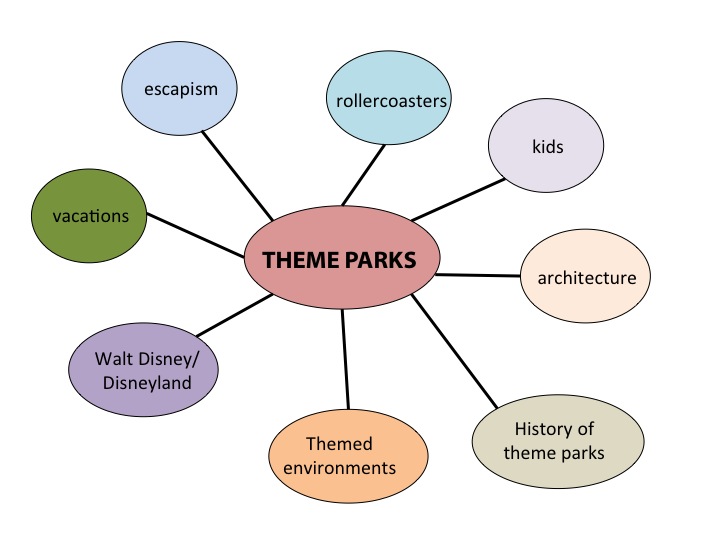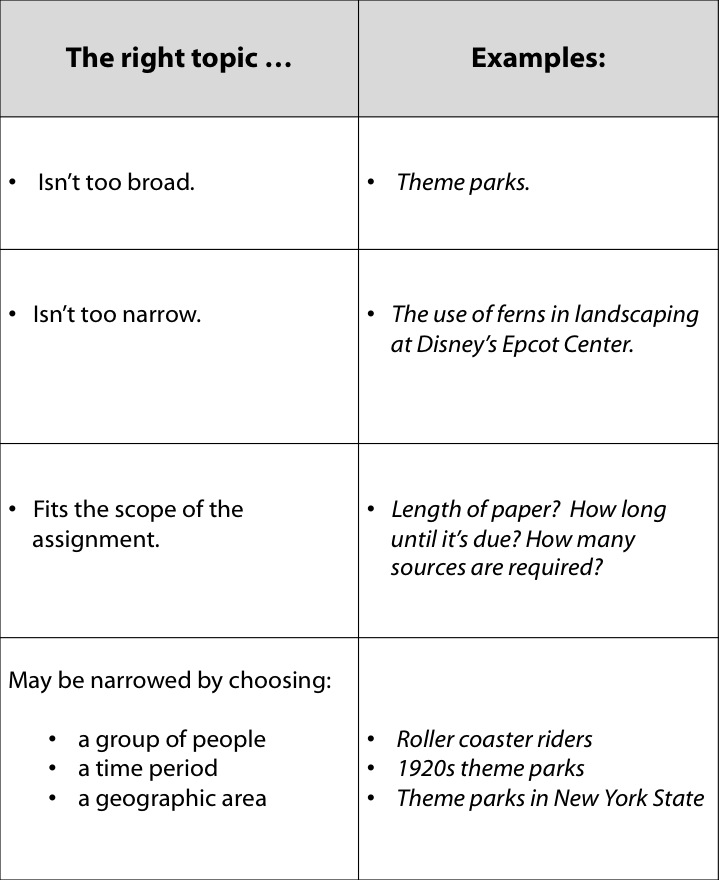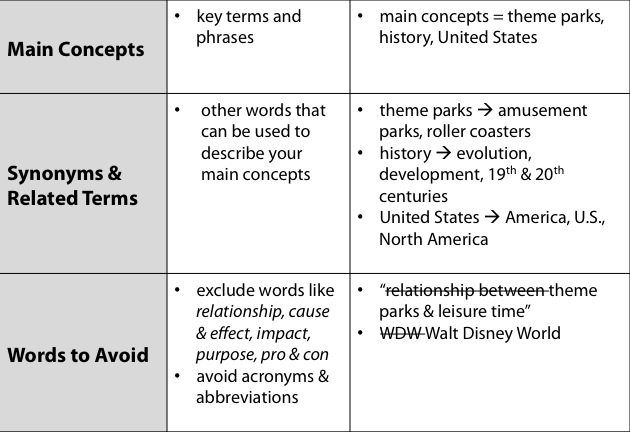| Today's Hours | Closed |
|---|
| Today's Hours | Closed |
|---|
"Topic analysis" is a vague term, but it's simply the process of exploring and fine-tuning your topic before you start looking for information. This process can also be described as "coming up with a research question."
When you're assigned a research topic, or pick one on your own, it may be very general in scope. Unless you're prepared to write a 300 page book, you can't cover the entirety of theme parks or animal habitats, or the Holocaust in a class assignment.
Start your project by brainstorming about your topic One possible method is to create a concept map like the one below:

You could also use a tool called Wordclouds.com, which generates word clouds from text. To try this, go to Wikipedia, find an article on your topic, copy the text, and paste it into Wordle. Here's a word cloud we made using the Wikipedia article on theme parks:
Creating a visual representation of all the ideas, people, and places associated with your topic can help you decide which aspect to explore.
Once you have a topic in mind, consider the criteria below to make sure you're on the right track! Don't forget to run your chosen topic past your instructor.

It's hard to find the right focus on a topic if you don't know anything about it, so you may need to seek out some background information. As we'll discuss in the next section, background information is typically found in what librarians like to call "reference sources." These include dictionaries, encyclopedias, textbooks, and other publications that contain factual, unbiased information.
To return to our example: let's pretend that we've brainstormed, done some background reading, and come up with a good topic: the history of theme parks in the United States. What's next?
The last step in topic analysis is figuring out what you're going to put in the search box. This is a two-step process:

Now that you're armed with a specific topic and a list of terms to search, it's time to think about what kind of information you'll need, and where you might find it.